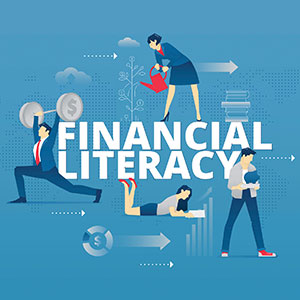 According to Fidelity Investments’ 2017 Higher Education Faculty Study, when it comes to grading their own financial literacy— from budgeting to investing— professors admit they’d give themselves a “B” grade.
According to Fidelity Investments’ 2017 Higher Education Faculty Study, when it comes to grading their own financial literacy— from budgeting to investing— professors admit they’d give themselves a “B” grade.
While professors feel comfortable with many fundamental financial concepts, there are other areas where extra study is needed. For example, nearly one third (29 percent) of professors aren’t sure of the investment mix of their retirement savings, suggesting they don’t know if the investments they selected align to a specific financial goal and timeline. Encouragingly, as faculty members age, their financial wisdom increases slightly: Boomer professors (born 1946-1964) give themselves a “B+” grade.
The study identified three important insights on how educators feel about their financial knowledge and areas where they would welcome help:
- Despite Advanced Degrees, Many Professors Feel Like Novice Investors: While they have mastered certain subjects in their professional lives, when it comes to investing, 37 percent of professors see themselves as "beginners." Not surprisingly, this sentiment is greater for younger professors with 47 percent of Gen X faculty (born 1965-1980) feeling inexperienced.
- Worried Retirement Savings Won't Make the Grade: While saving for retirement is the top financial priority for professors (42 percent), and their reported average total savings rates for retirement (employee + employer contributions) is a strong 15 percent, more than half (54 percent) of faculty members are concerned that they could outlive their retirement savings. There is a need to be more engaged, and to do so as early in their careers as possible.
- Extra Help Needed: When asked about where they need financial help, the top responses for professors are understanding Medicare/health care costs (34 percent) and choosing specific investments (32 percent).
Fortunately for all employees, faculty and staff, the University of Texas Retirement Program boasts two voluntary retirement savings plans (UTSaver 403(b) Tax Sheltered Annuity and the UTSaver 457(f) Deferred Compensation Plan) to help meet everyone’s retirement needs. More importantly, the University has partnered with five terrific companies (Fidelity Investments, Lincoln Financial, TIAA, VALIC and VOYA Financial) to provide financial professionals near every UT institution to ensure that every employee receives the extra help they need to get to where they want to me.
To learn more about your retirement savings options, please visit www.utretirement.utsystem.edu.
Study article courtesy Fidelity Investments

